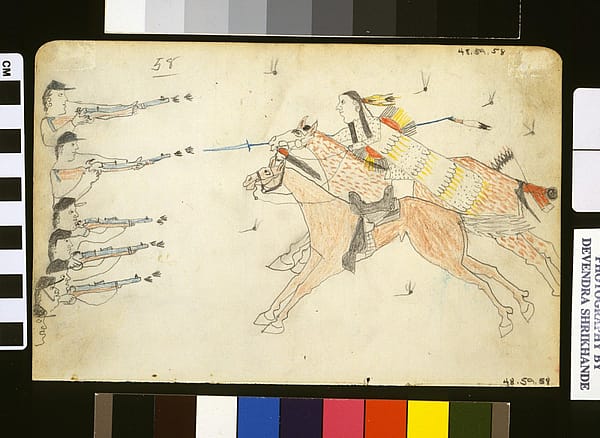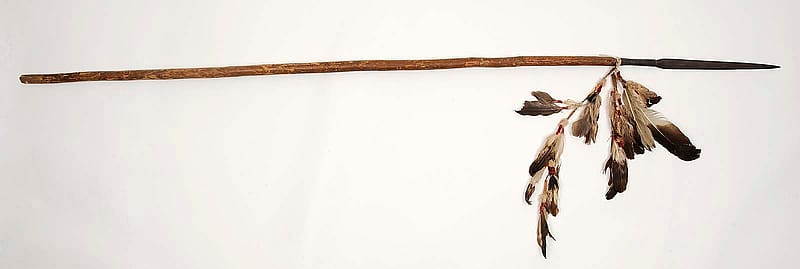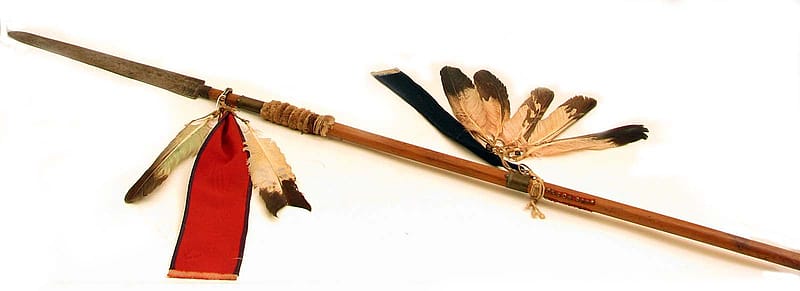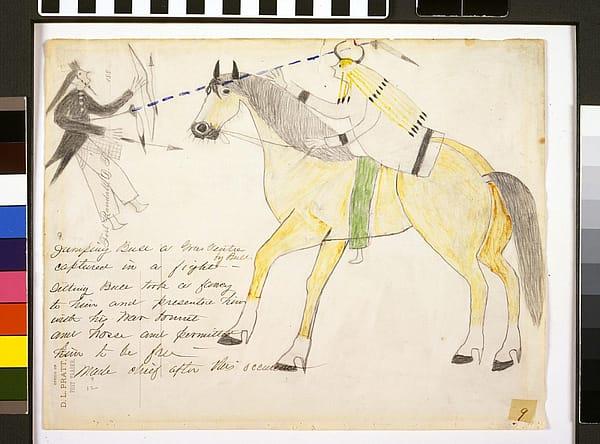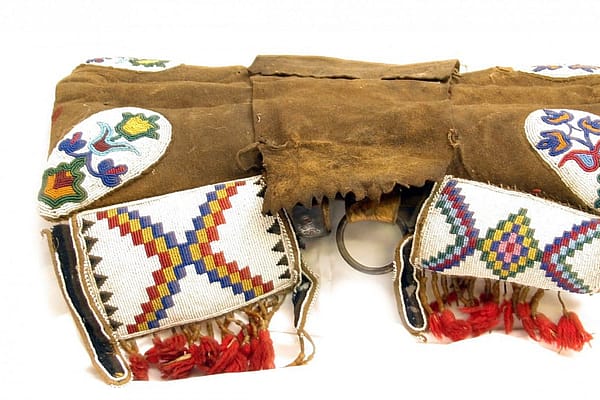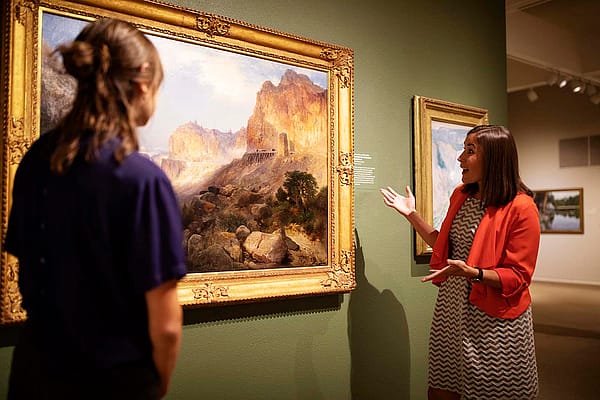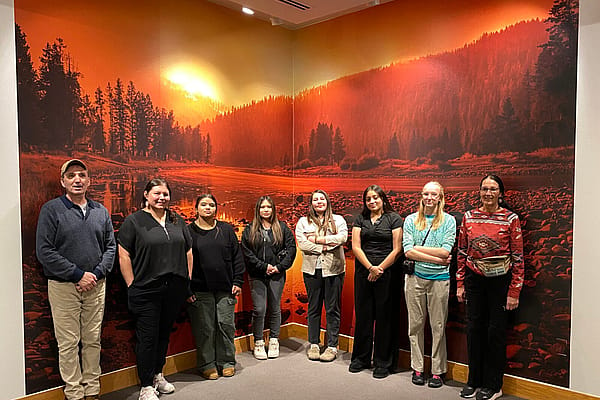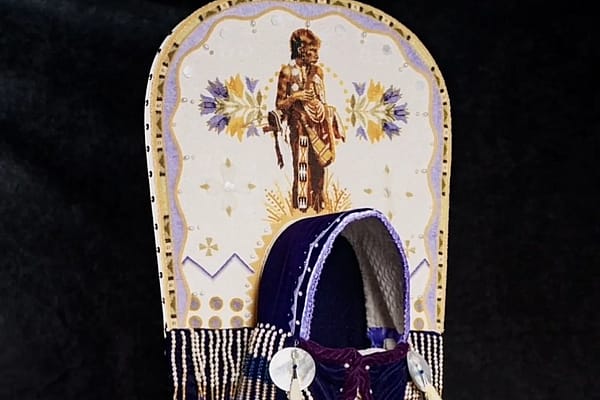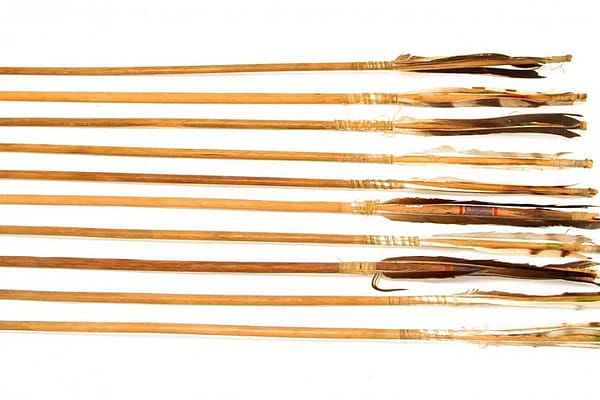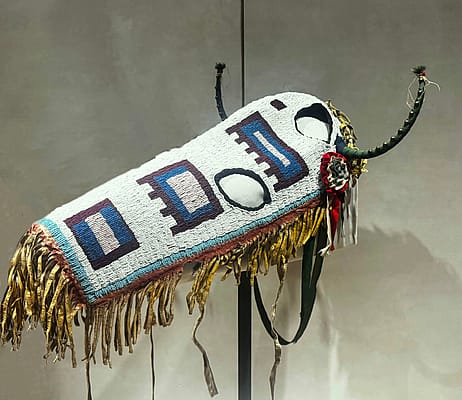![Wahúkeza [lance]. NA.108.159](https://centerofthewest.org/cdn-cgi/image/width=1400,height=509,fit=crop,quality=80,scq=60,gravity=auto,sharpen=1,metadata=none,format=auto,onerror=redirect/wp-content/uploads/2017/08/NA.108.159.jpg)
Plains Indian Weapons—Part 3: the Lance
In this third part of the series of blogs on Plains weaponry, I will talk about lances…
The lance—wahúkeza—is another weapon commonly used on the plains. Like the bow, it is used both in hunting buffalo and in combat. The shafts can be constructed from various kinds of wood, with strong woods like ĉaŋsuda (ash) or osage orange favored most. As with arrowheads, lance blades were originally chipped out of stones, like flint or obsidian, or even made from bone. After European immigrants arrived, men traded for metal lance blades or hammered out sword blades for really long, slender lance blades. Stone and bone blades, however, were employed for lance blades even after Europeans introduced metal, mostly for ceremonial lances, however (as in the case of certain warrior-society lances).
Lances ranged in length from shorter ones about the height of a man, to long, fourteen-foot lances more commonly used on the Southern Plains by Nᵾmᵾ (Comanche), Ka’igwu (Kiowa), Hinono’eiteen (Arapaho) and Tsitsistas/So’taeo’o (Cheyenne) men.
The types of lances also varied. Some, such as those used for hunting or for regular use in warfare, could be quite plain and undecorated. Others, however, belonged to specific warrior societies and were indicators of a man’s rank or position in those societies. These lances would be specially decorated with objects of spiritual potency, increasing their effectiveness in combat.
One particularly sacred lance was the “bow-lance.” Shaped like a long, reflexed bow, it was equipped with a lance point at one end. Despite its resemblance to a bow, it would be used as a lance in combat. Bow-lances were spiritual objects that either belonged to a warrior-society, or were made by individuals that, because of their visionary experiences, were instructed to do so. In either case, they were imbued with power and must be handled accordingly, both in battle and in day-to-day life.
Plains lances were seldom used in the classic “jousting” style of combat, but were rather held in either one or both hands and used to stab/jab with, as they would be used if on foot. Like all weapons, however, while they may have had fully-functioning lethal blades or killing capabilities, due to our conceptions of honor in combat on the plains, they were frequently used to simply strike coups—nonlethal blows—on enemies to demonstrate bravery and avoid unnecessary killing.
Written By
Ernest Gendron
Ernest is a Nakoda-Cree educator working seasonally at the Buffalo Bill Center of the West with both the education department and the Plains Indian Museum. He is a craftsman of Nakoda-Cree ‘male’ arts, such as bows and arrows, clubs, horn spoons, etc. He is also a consultant on Plains Indian history. When not on site, he is working on his thesis in pursuit of a Master’s degree in Heritage Management.
